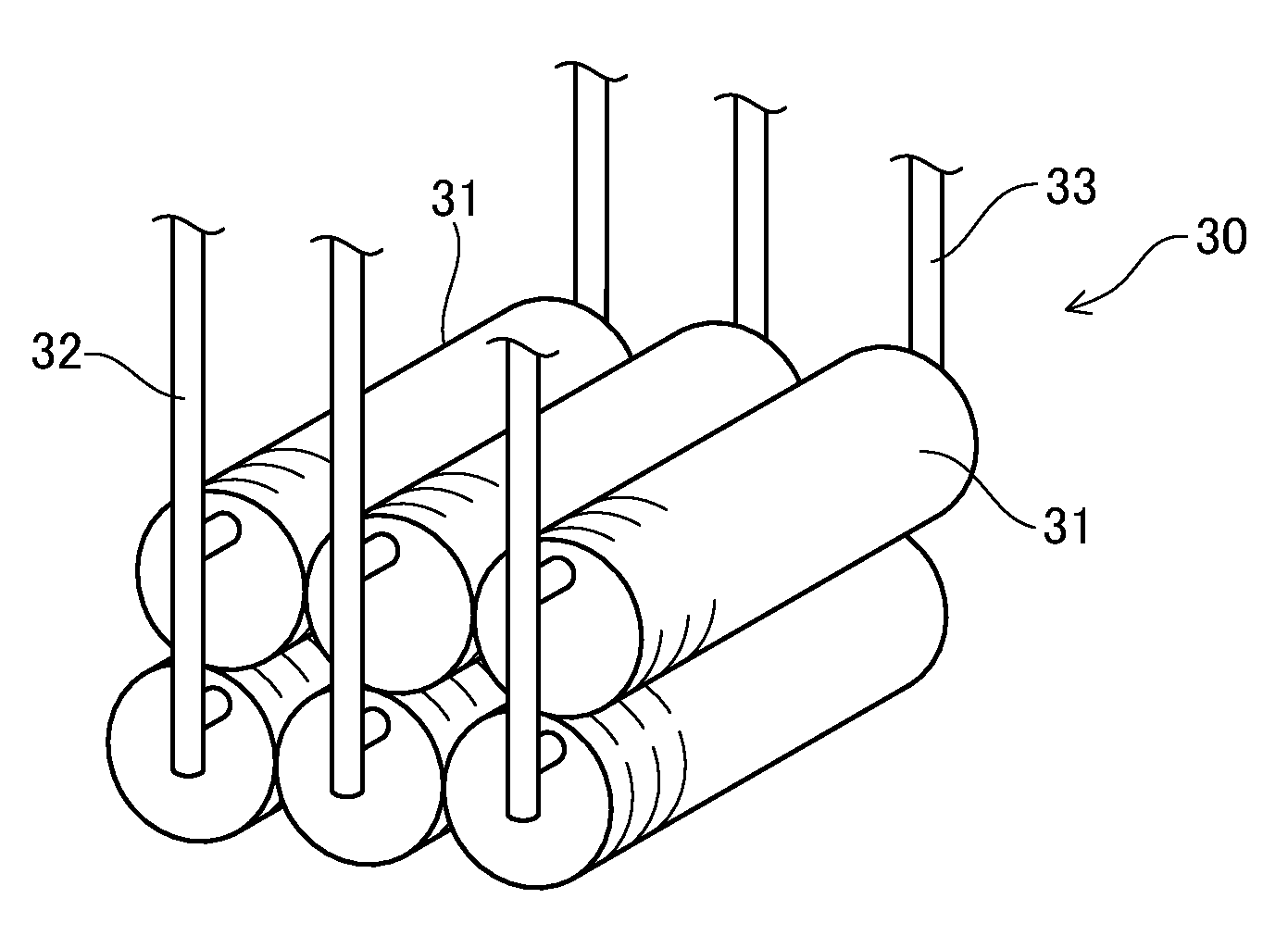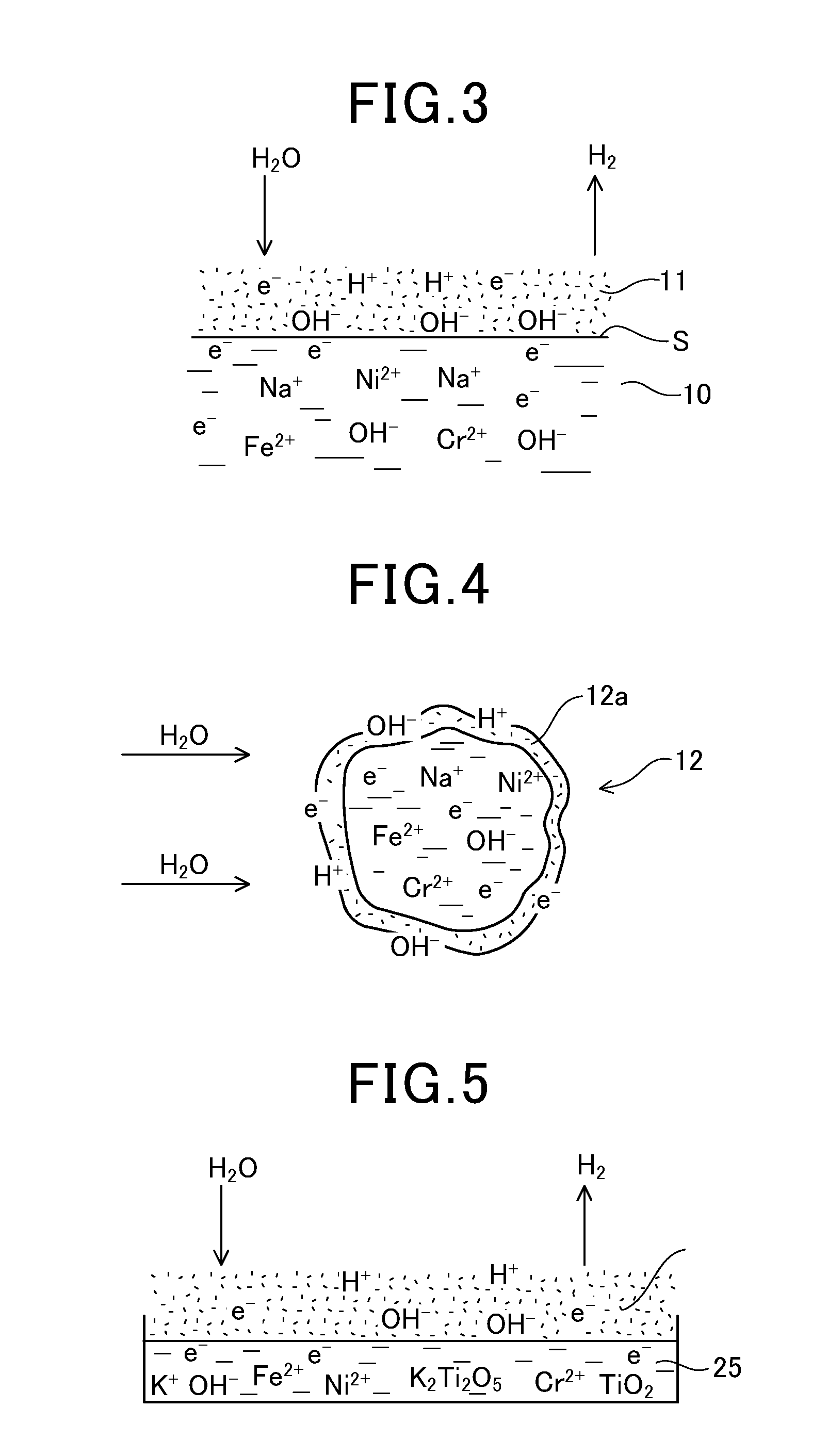Catalyst for generating hydrogen, method of generating hydrogen and apparatus for generating hydrogen
- Summary
- Abstract
- Description
- Claims
- Application Information
AI Technical Summary
Benefits of technology
Problems solved by technology
Method used
Image
Examples
experimental example
5) EXPERIMENTAL EXAMPLE
[0170]Next, experimental examples in which the hydrogen generating apparatus shown in FIG. 1 is used will now be explained. The existence of hydrogen was made sure by combustion tests of hydrogen.
1. The First Experimental Example
[0171]0.2 cc of water was supplied every 10 minutes into the casing 1 (width: 50 mm, length: 200 mm, height: 15 mm) without any catalyst therein. At this time, hydrogen is generated at a temperature of approximately 700° C., and however, the generation of hydrogen was stopped after 4 to 6 hours.
[0172]The material of the casing 1 was 18-8 stainless steel containing 18% Cr, 8% Ni and remains Fe.
[0173]In case that approximately 20 g of scrap stainless steel was put into the casing 1, hydrogen were generated for two days. Instead of the scrap stainless steel, scrap copper of approximately 10 g was put into the casing 1. At this time, the generation of hydrogen was stopped after one day. Further, when 96 g of scrap iron was input into the c...
PUM
| Property | Measurement | Unit |
|---|---|---|
| Temperature | aaaaa | aaaaa |
| Time | aaaaa | aaaaa |
| Melting point | aaaaa | aaaaa |
Abstract
Description
Claims
Application Information
 Login to View More
Login to View More - R&D
- Intellectual Property
- Life Sciences
- Materials
- Tech Scout
- Unparalleled Data Quality
- Higher Quality Content
- 60% Fewer Hallucinations
Browse by: Latest US Patents, China's latest patents, Technical Efficacy Thesaurus, Application Domain, Technology Topic, Popular Technical Reports.
© 2025 PatSnap. All rights reserved.Legal|Privacy policy|Modern Slavery Act Transparency Statement|Sitemap|About US| Contact US: help@patsnap.com



